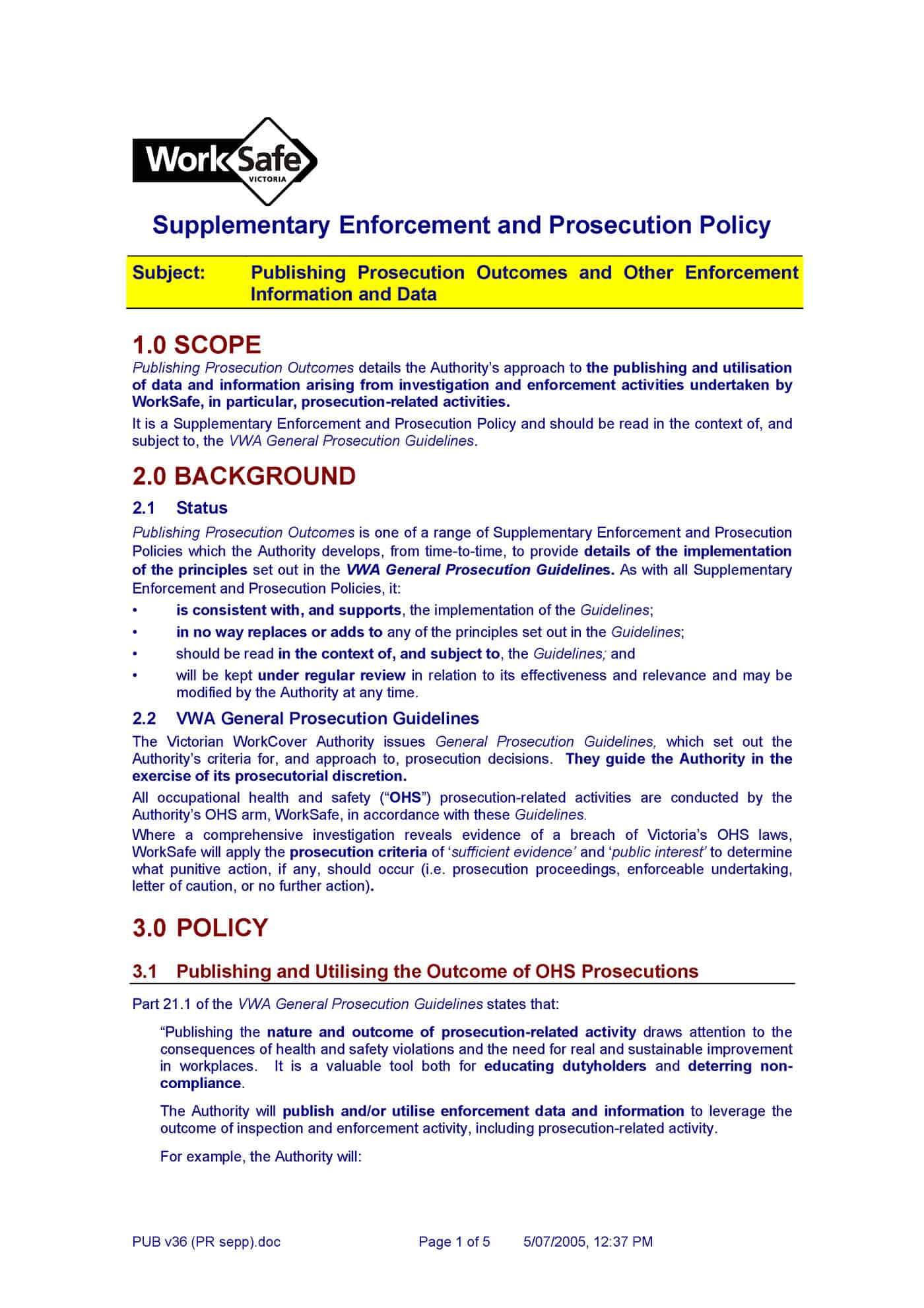 WorkSafe Victoria has been reviewing a series of enforcement and prosecution policies for some time. One of these policies set for re-issue relates specifically to the publication of prosecutorial information through its website and media releases and, although the “new” policy is not yet available, it may be worth remembering the previous policy, last revised in 2005.
WorkSafe Victoria has been reviewing a series of enforcement and prosecution policies for some time. One of these policies set for re-issue relates specifically to the publication of prosecutorial information through its website and media releases and, although the “new” policy is not yet available, it may be worth remembering the previous policy, last revised in 2005.
Media Releases
WorkSafe Victoria’s “Supplementary Enforcement and Prosecution Policy on Publishing Prosecution Outcomes and Other Enforcement Information and Data” (no longer available on-line) says that
“WorkSafe will release media statements and authorised representatives will grant media interviews, as appropriate, to the print, electronic, and/or broadcast media.” (original emphasis)
The reason behind this mode of dissemination, and others, is outlined elsewhere in the policy:


